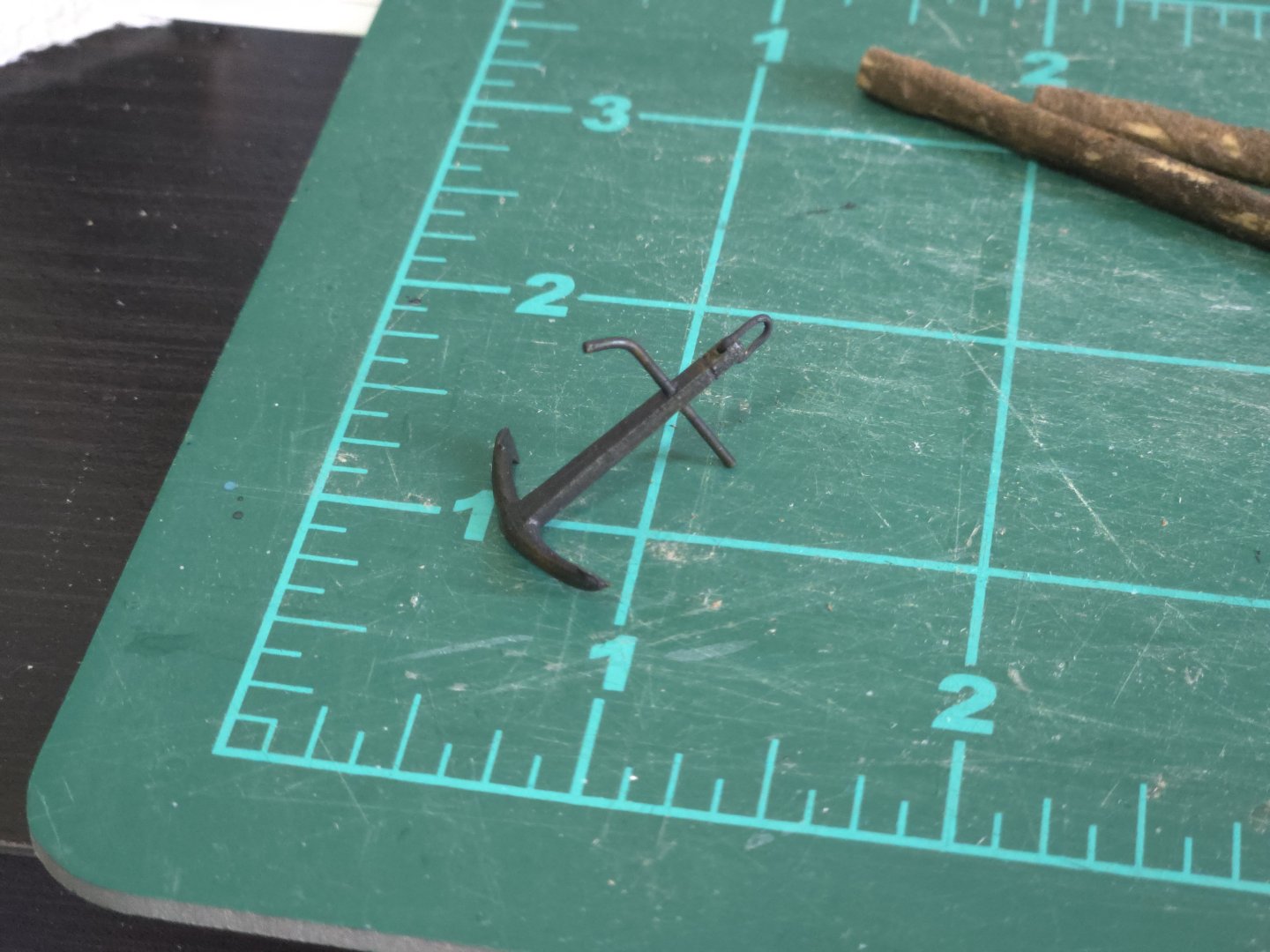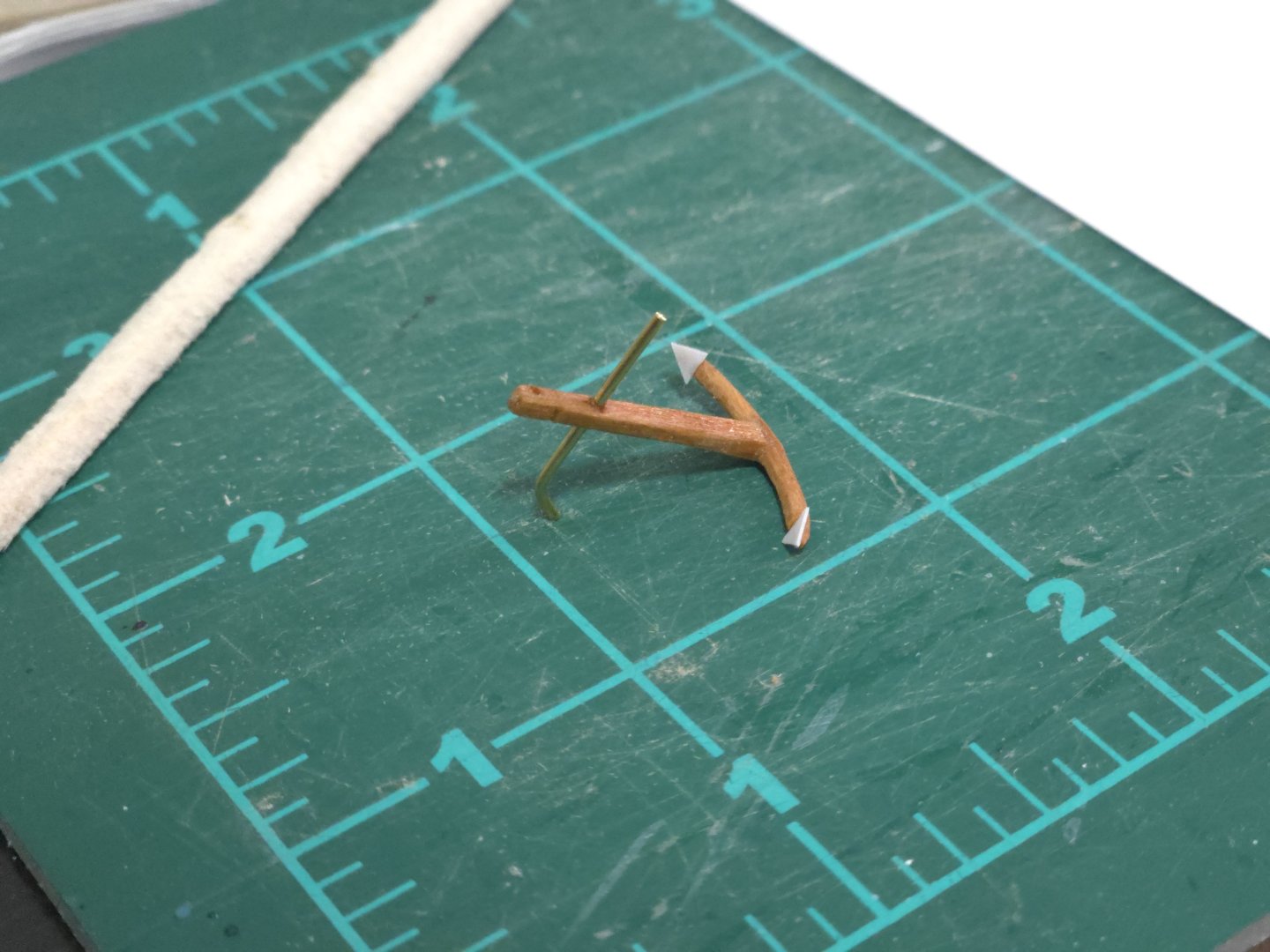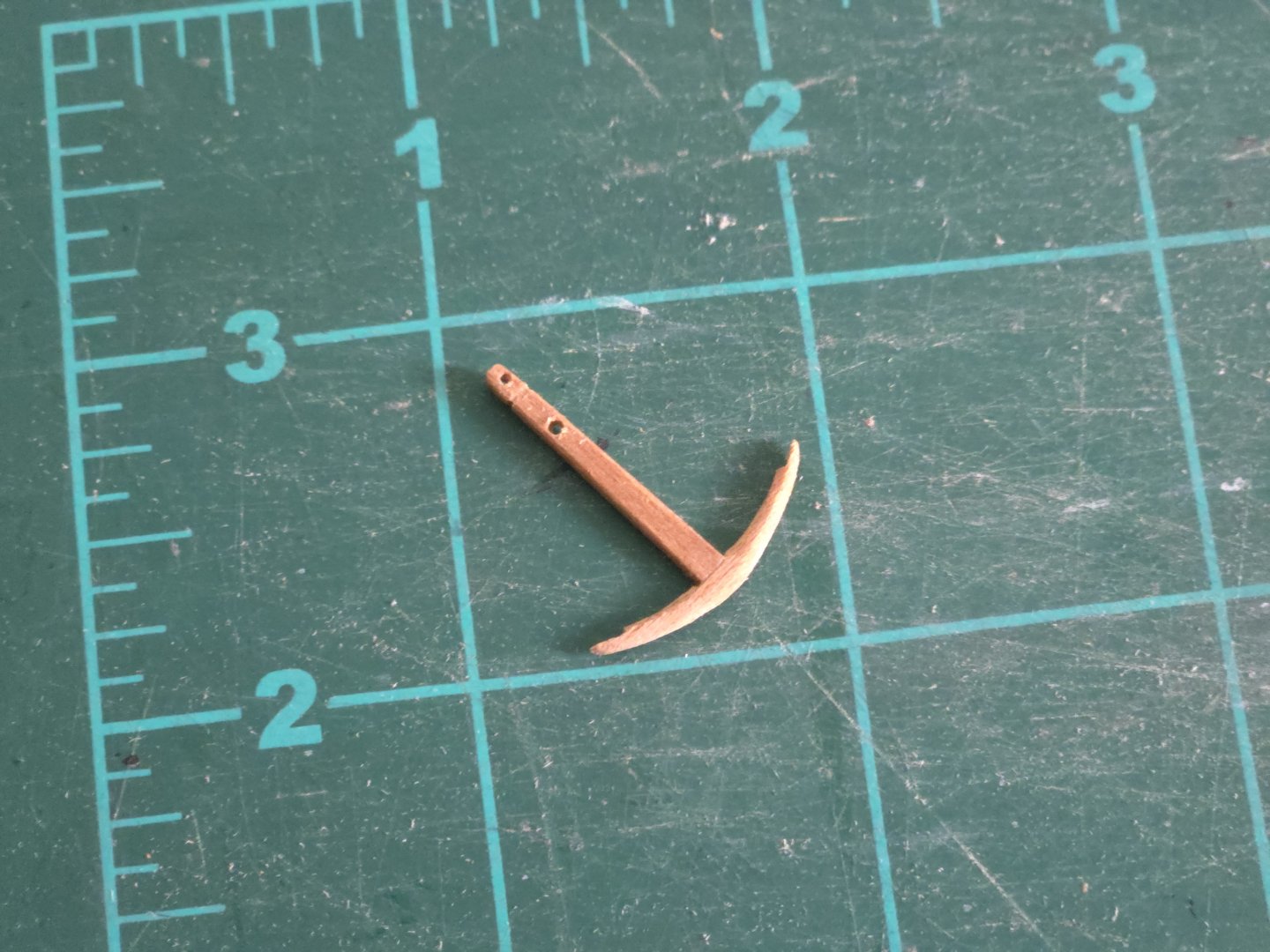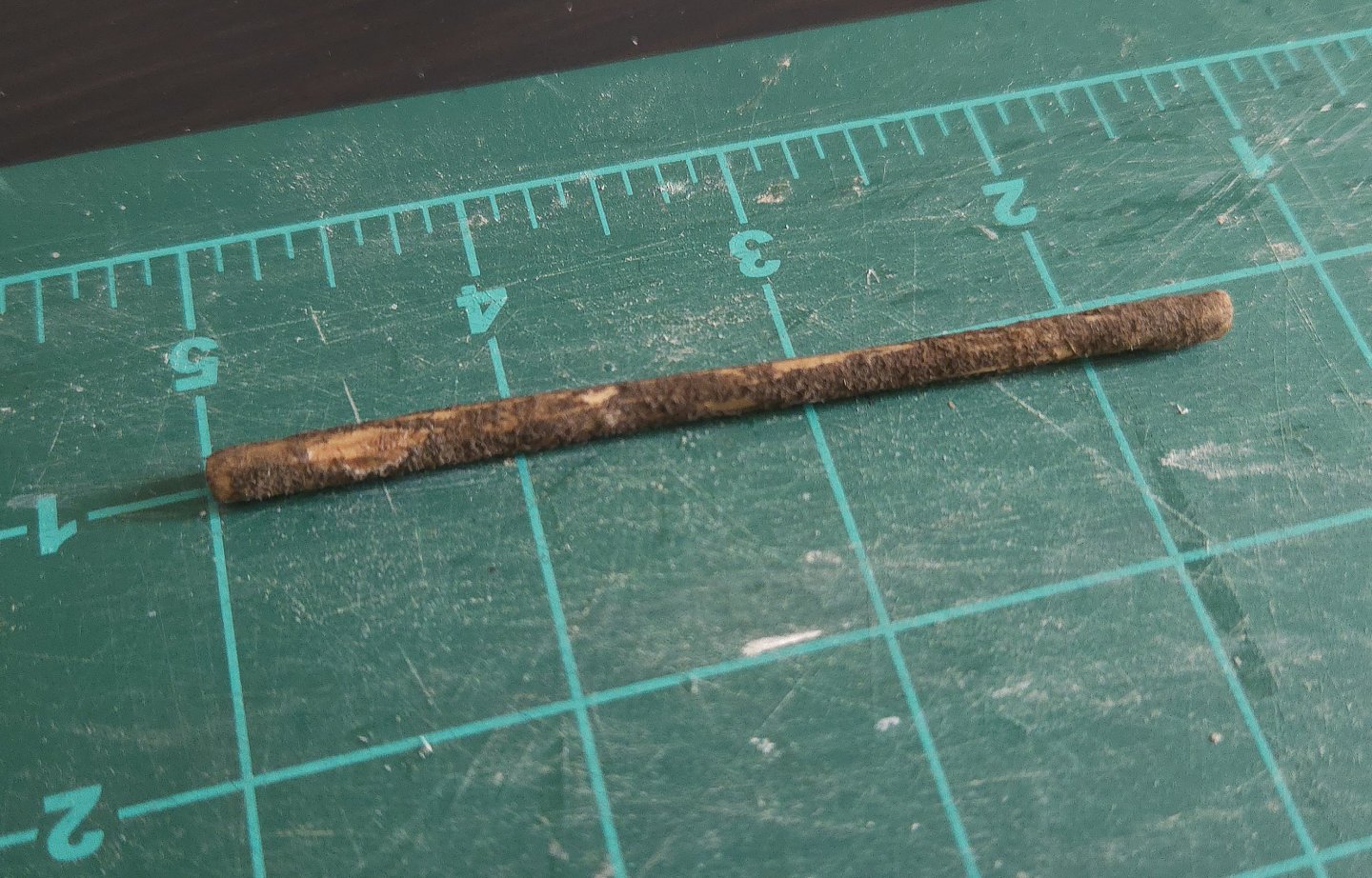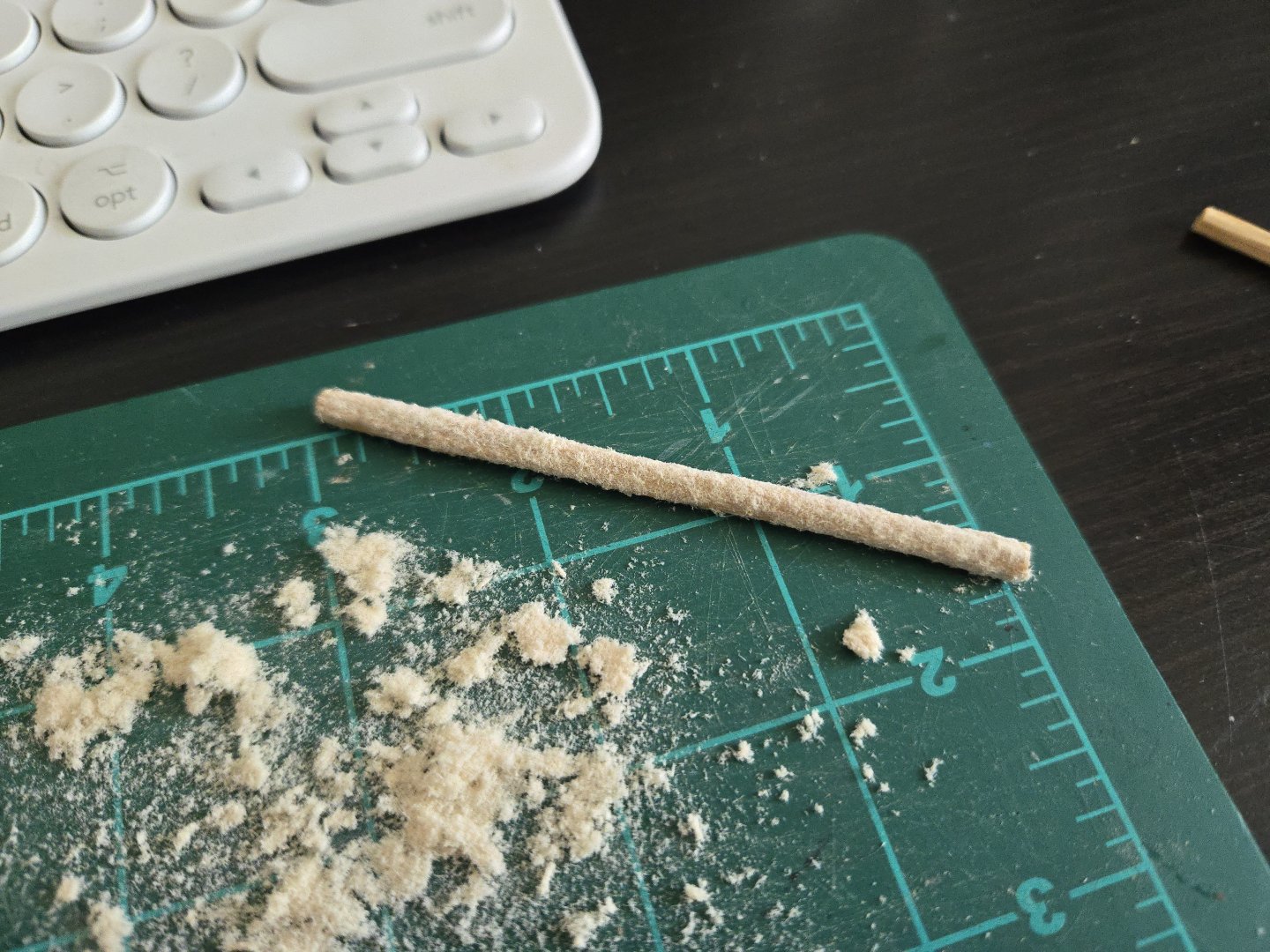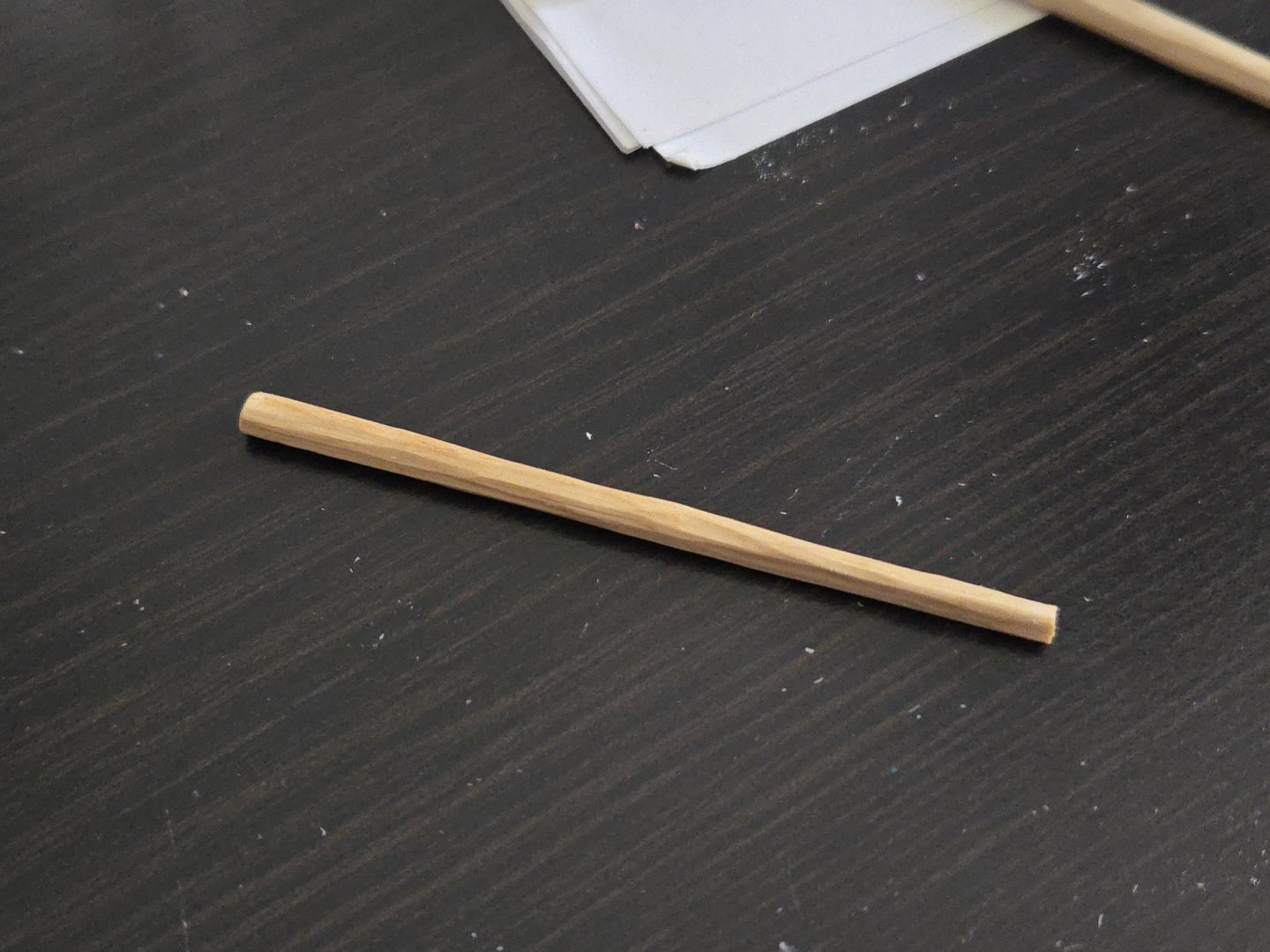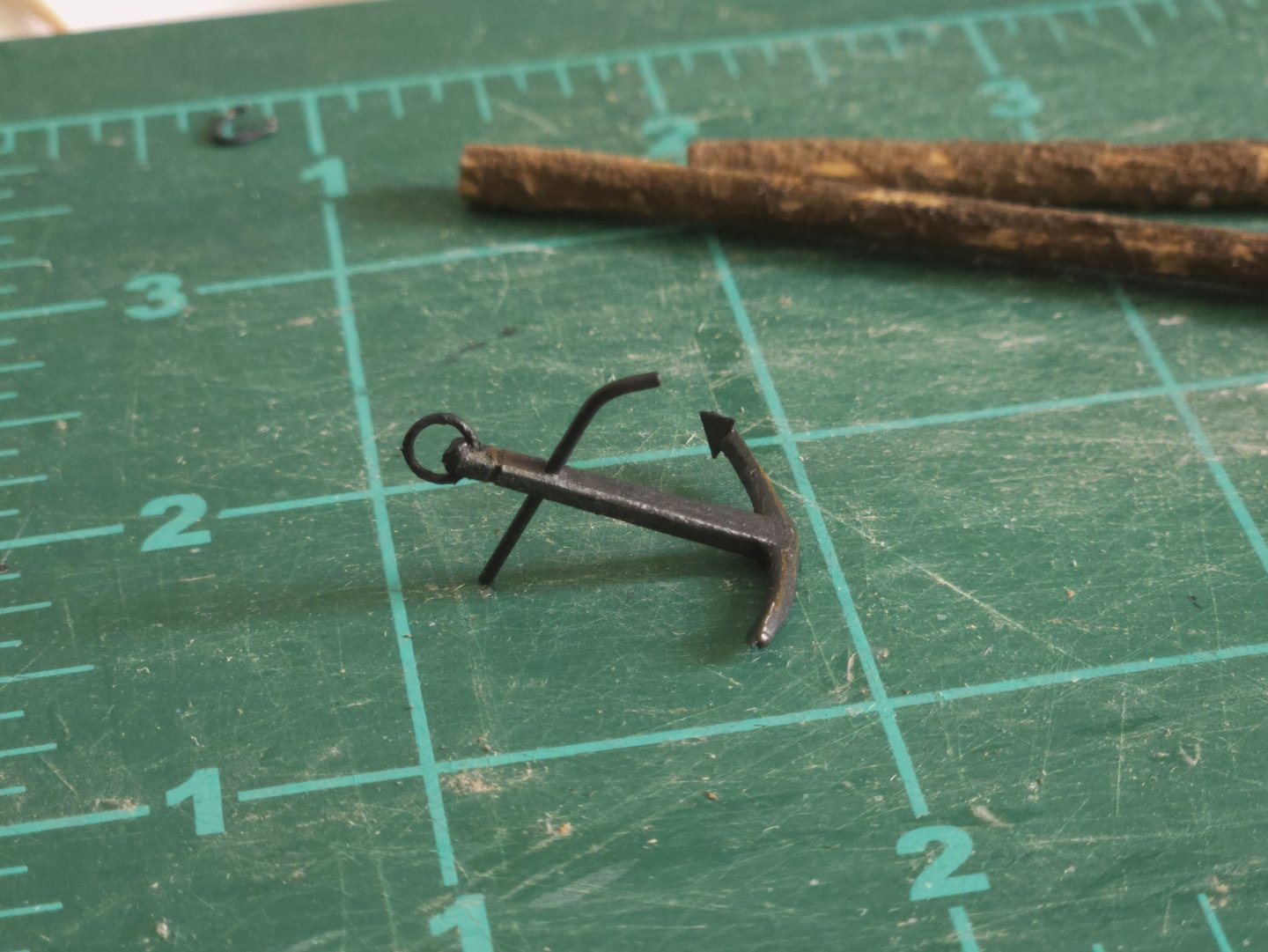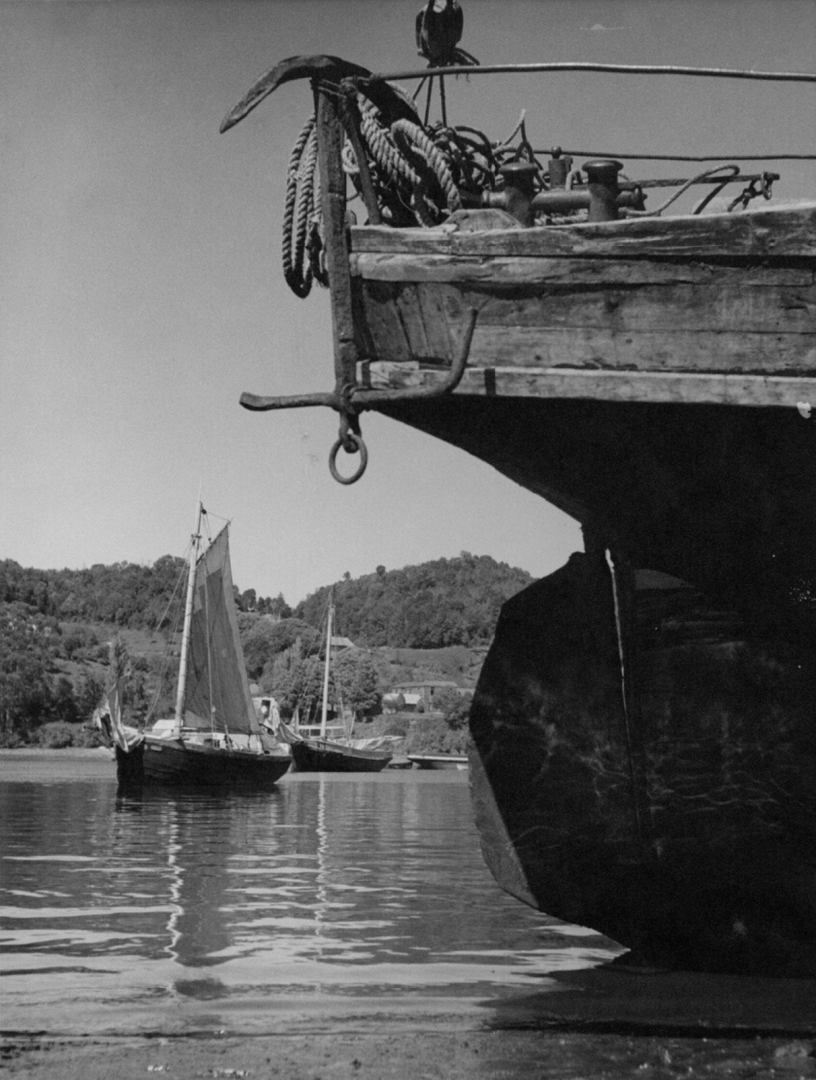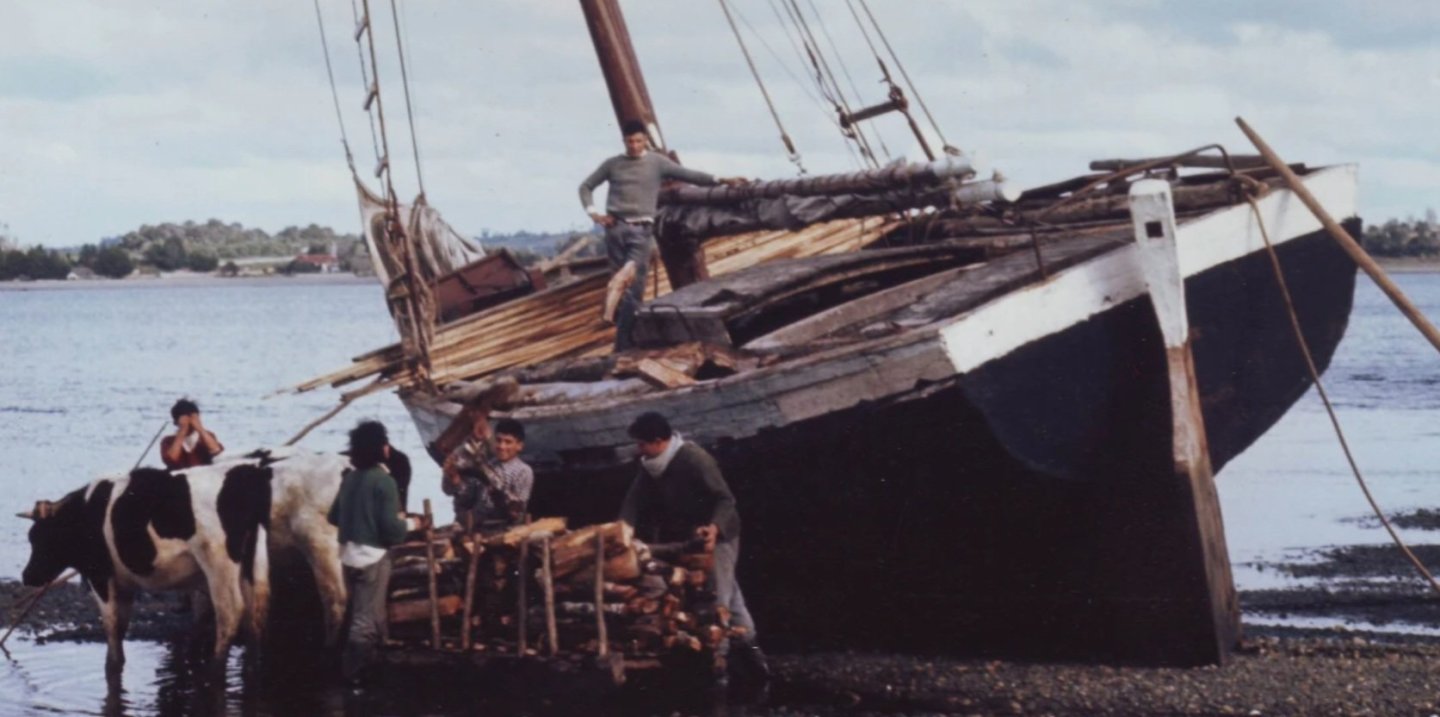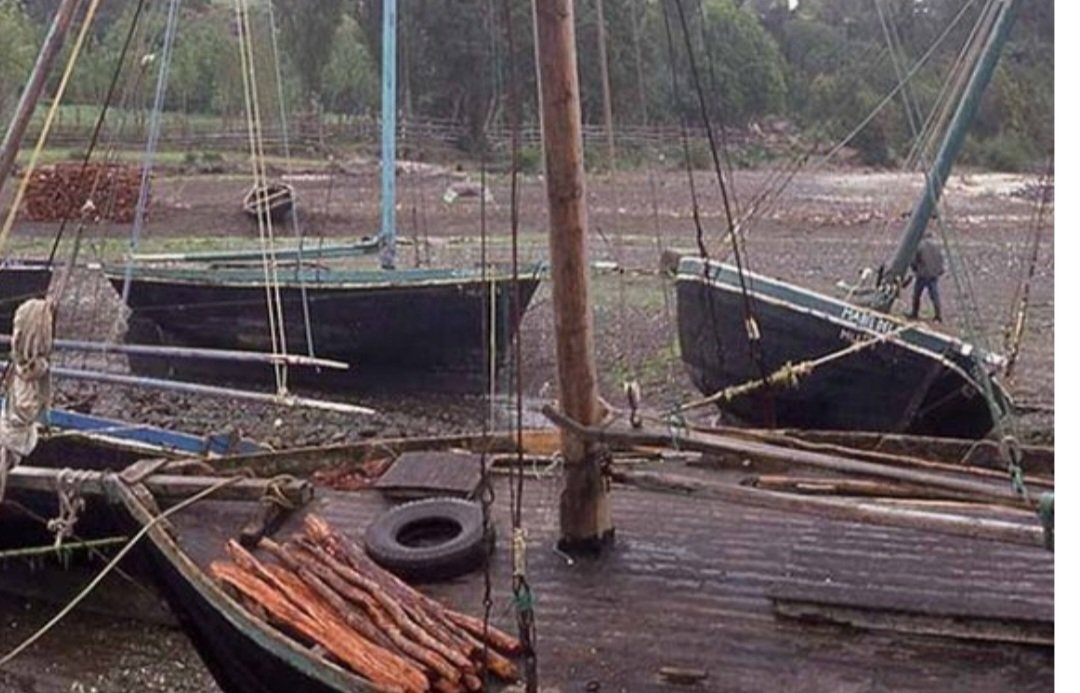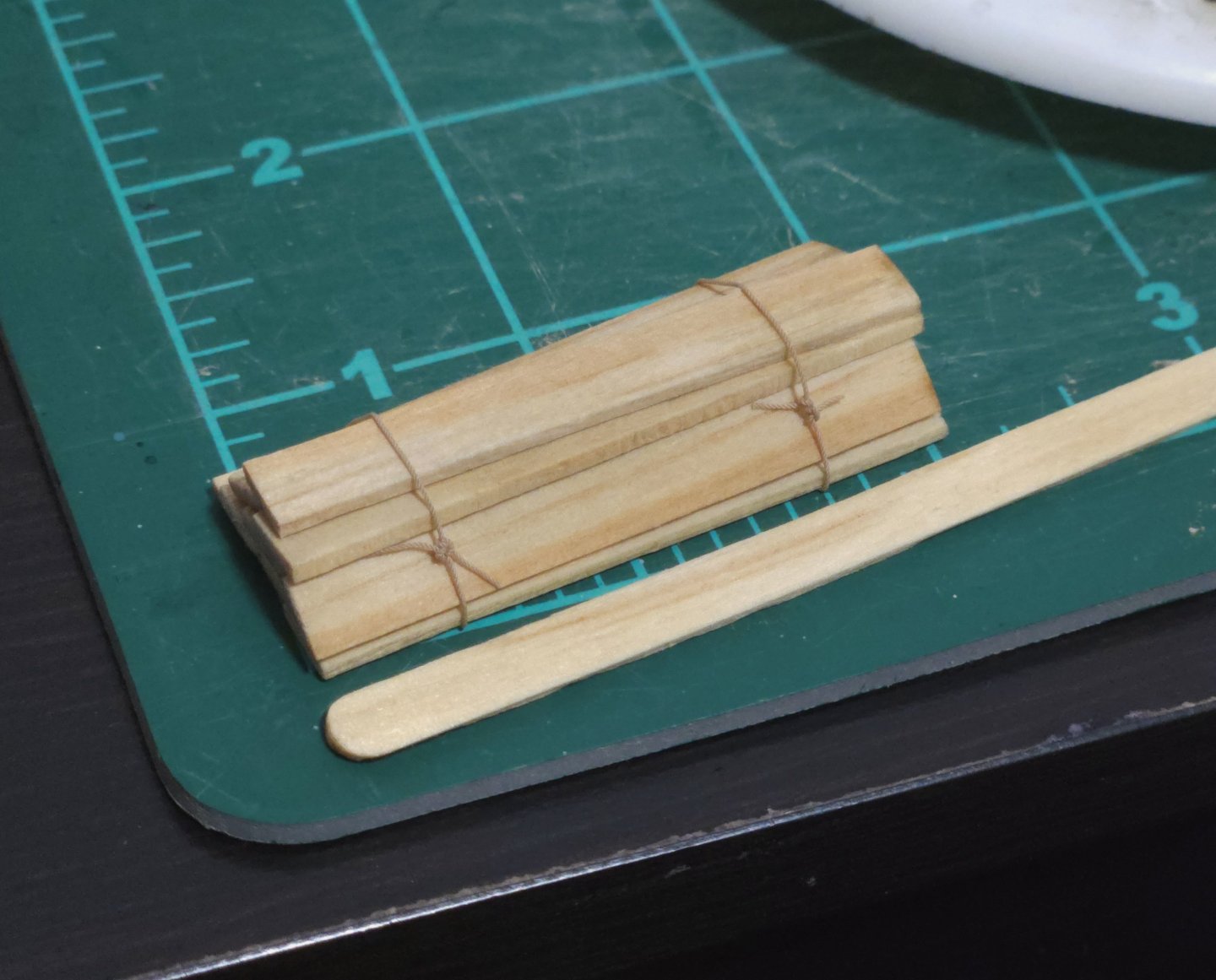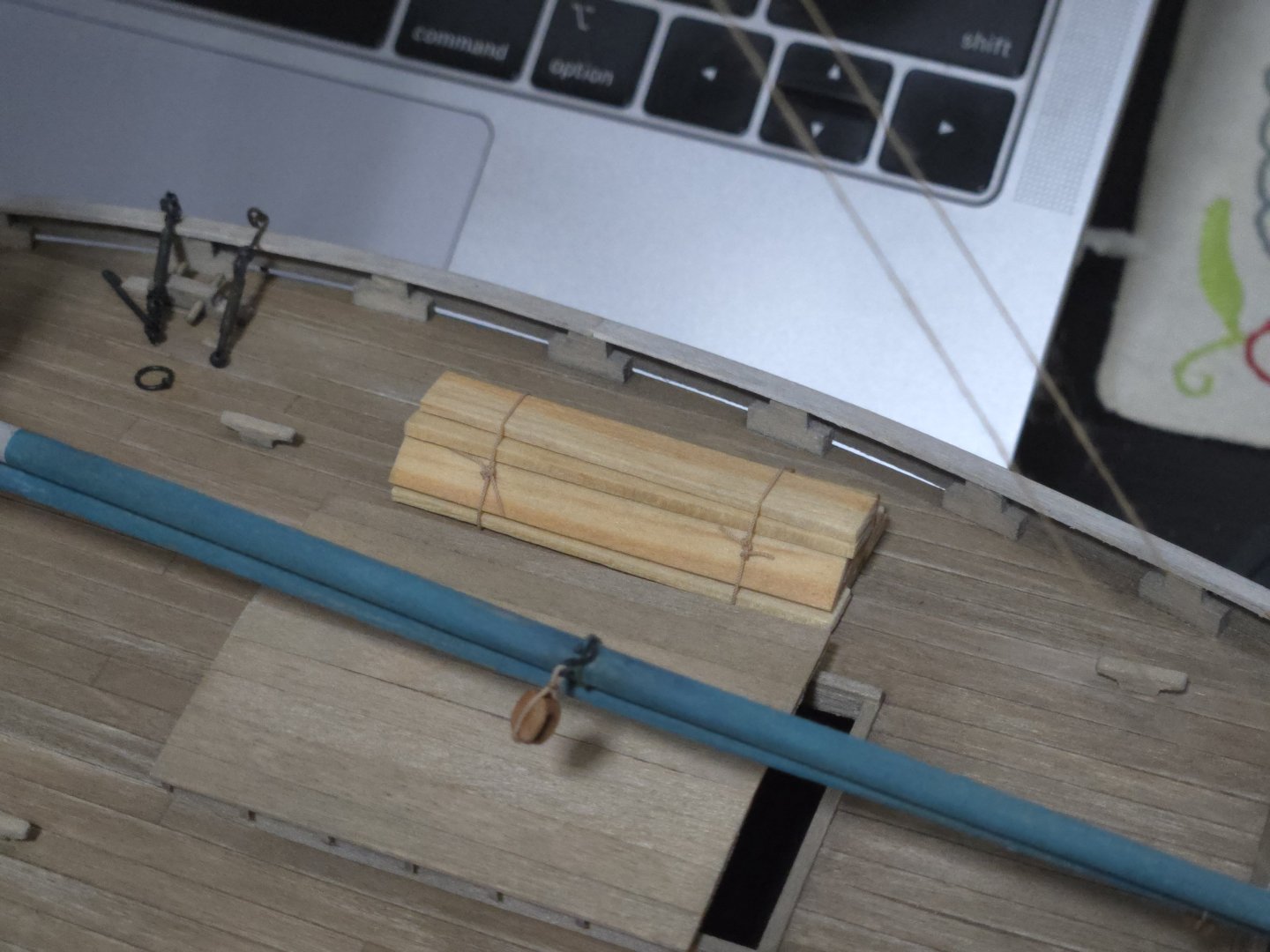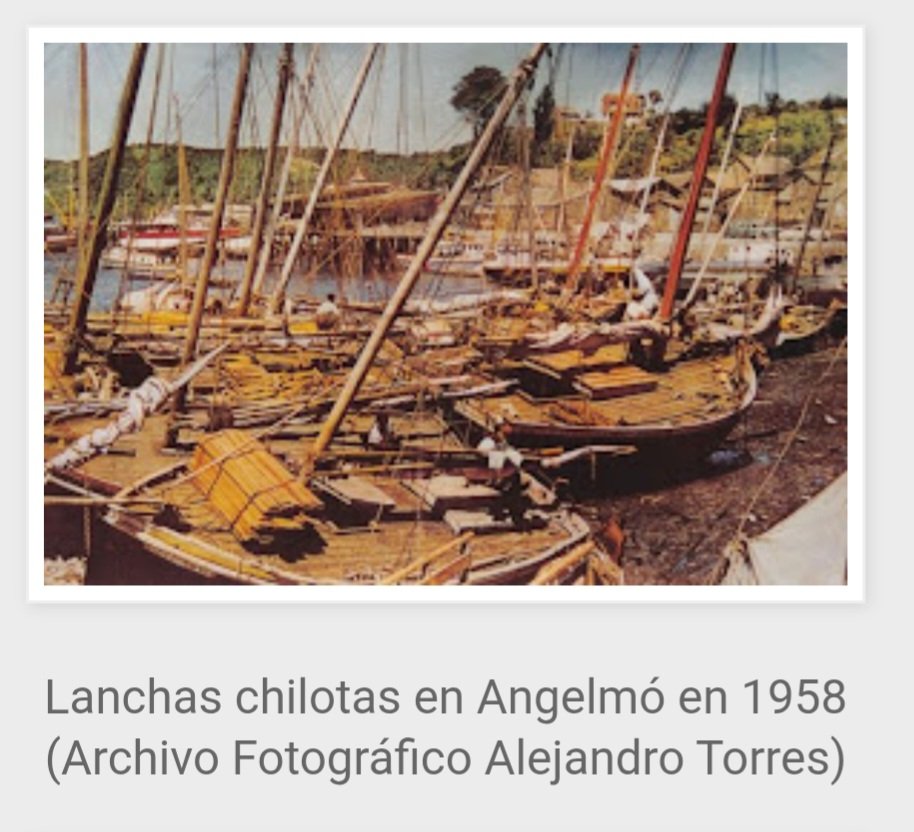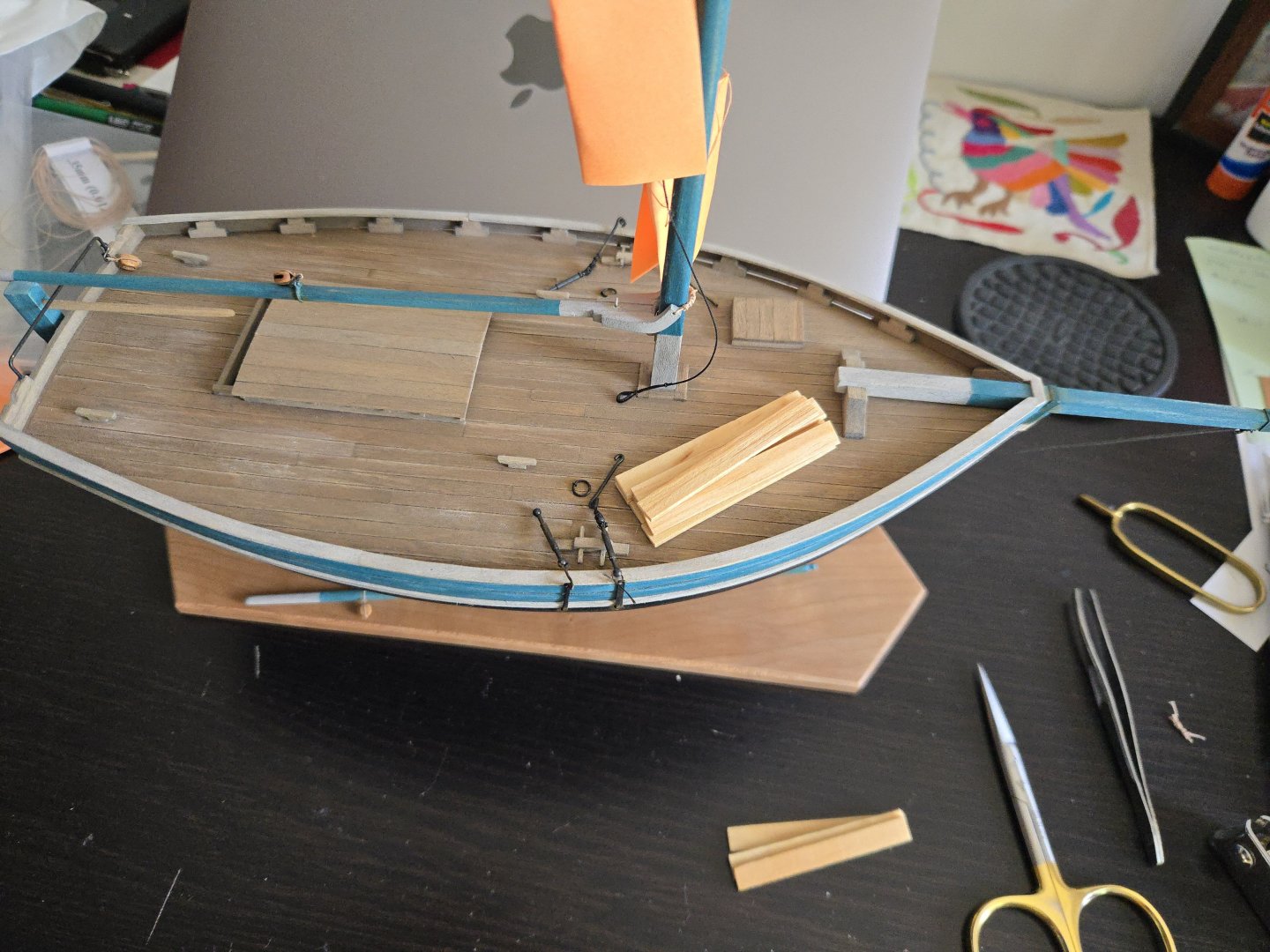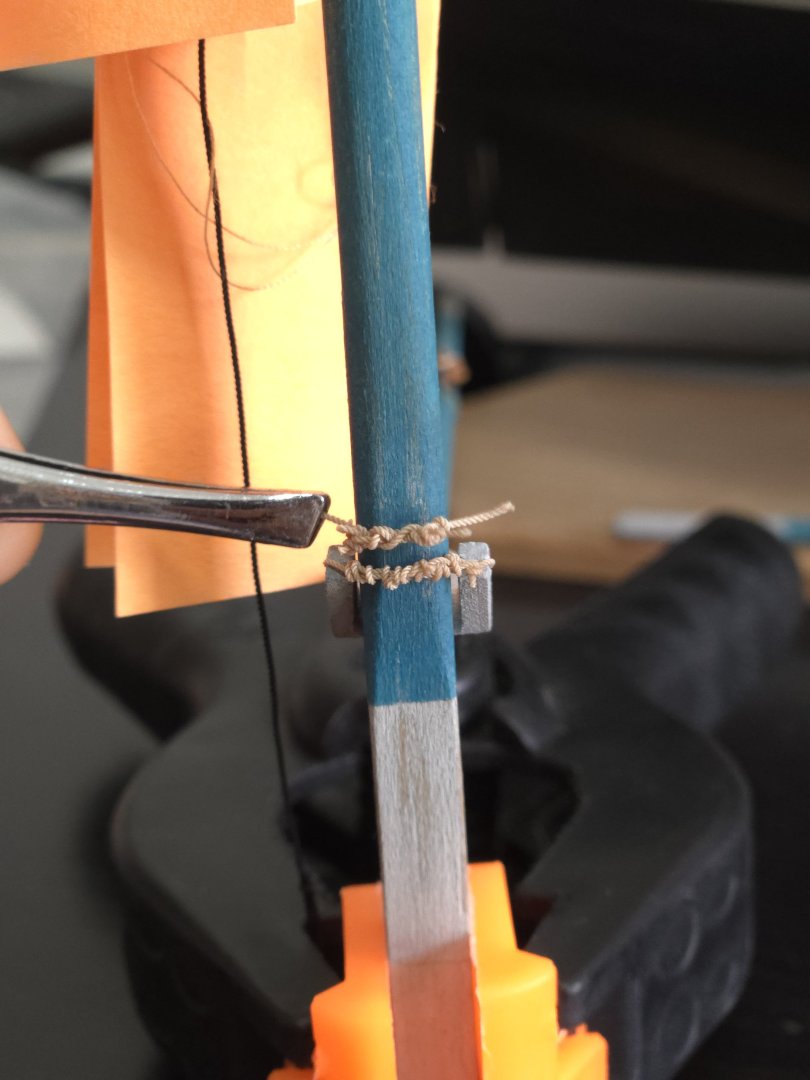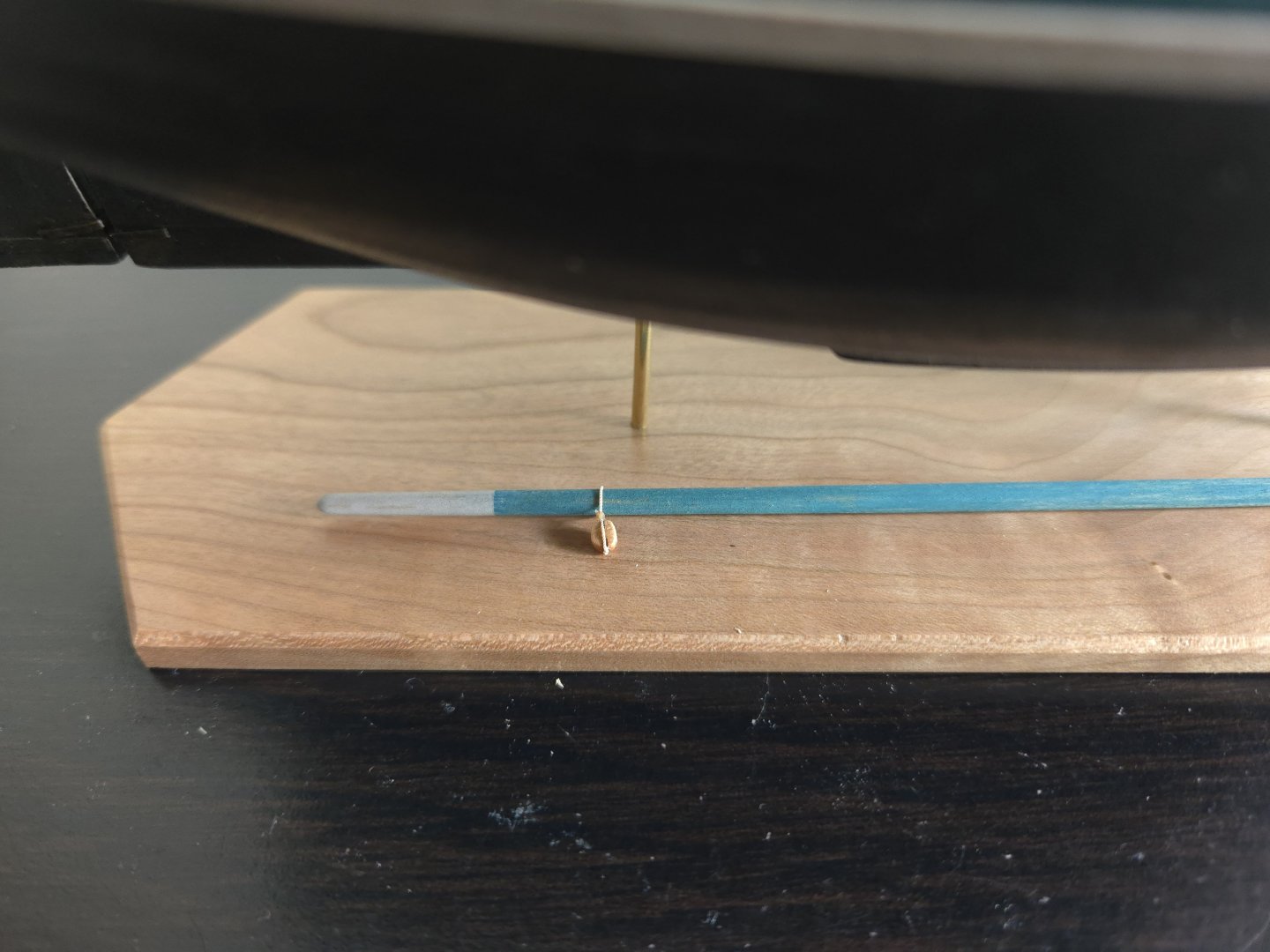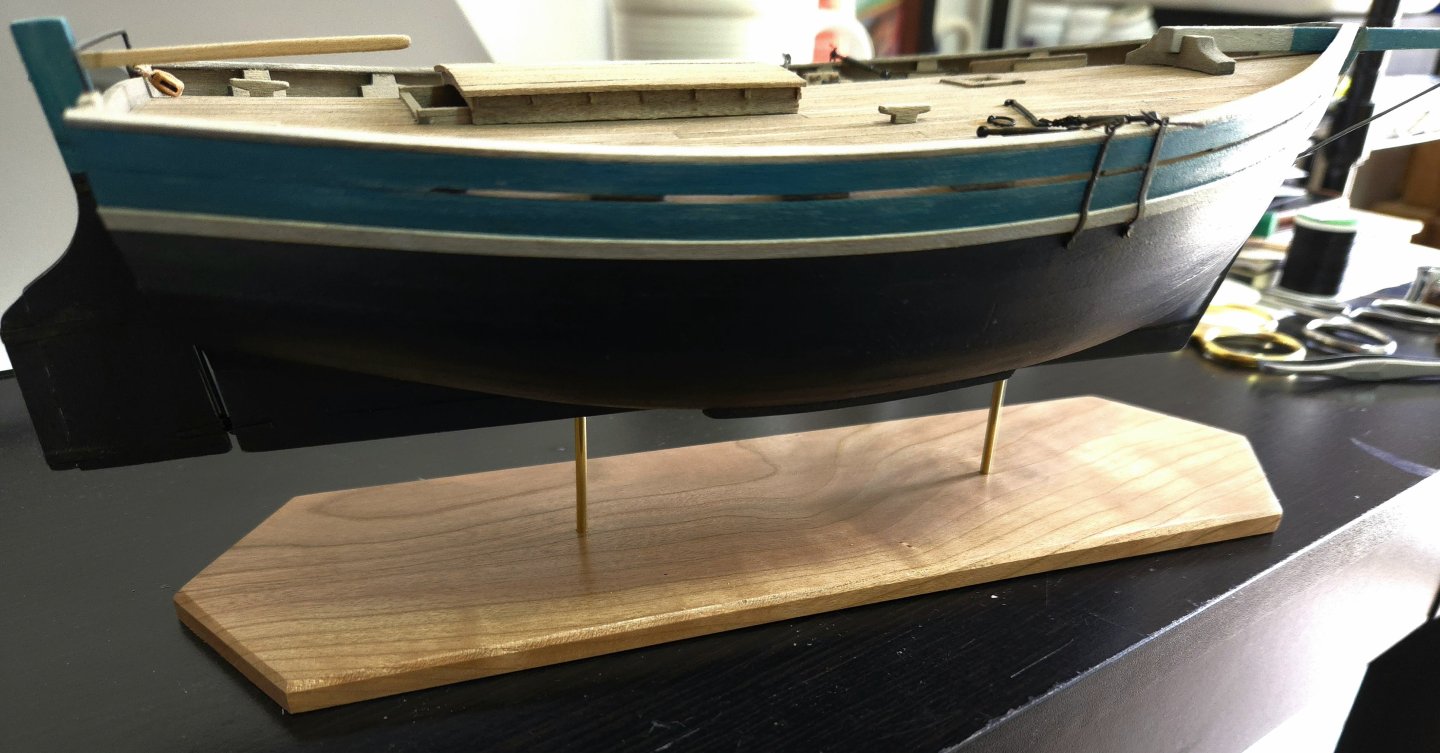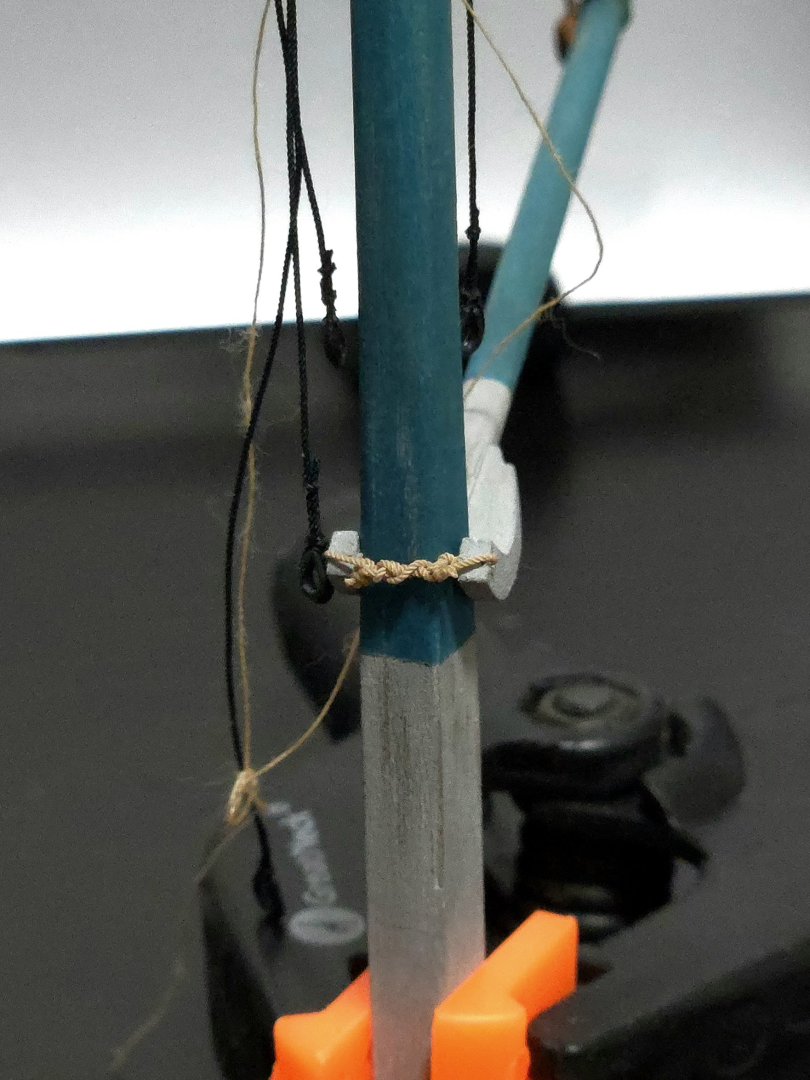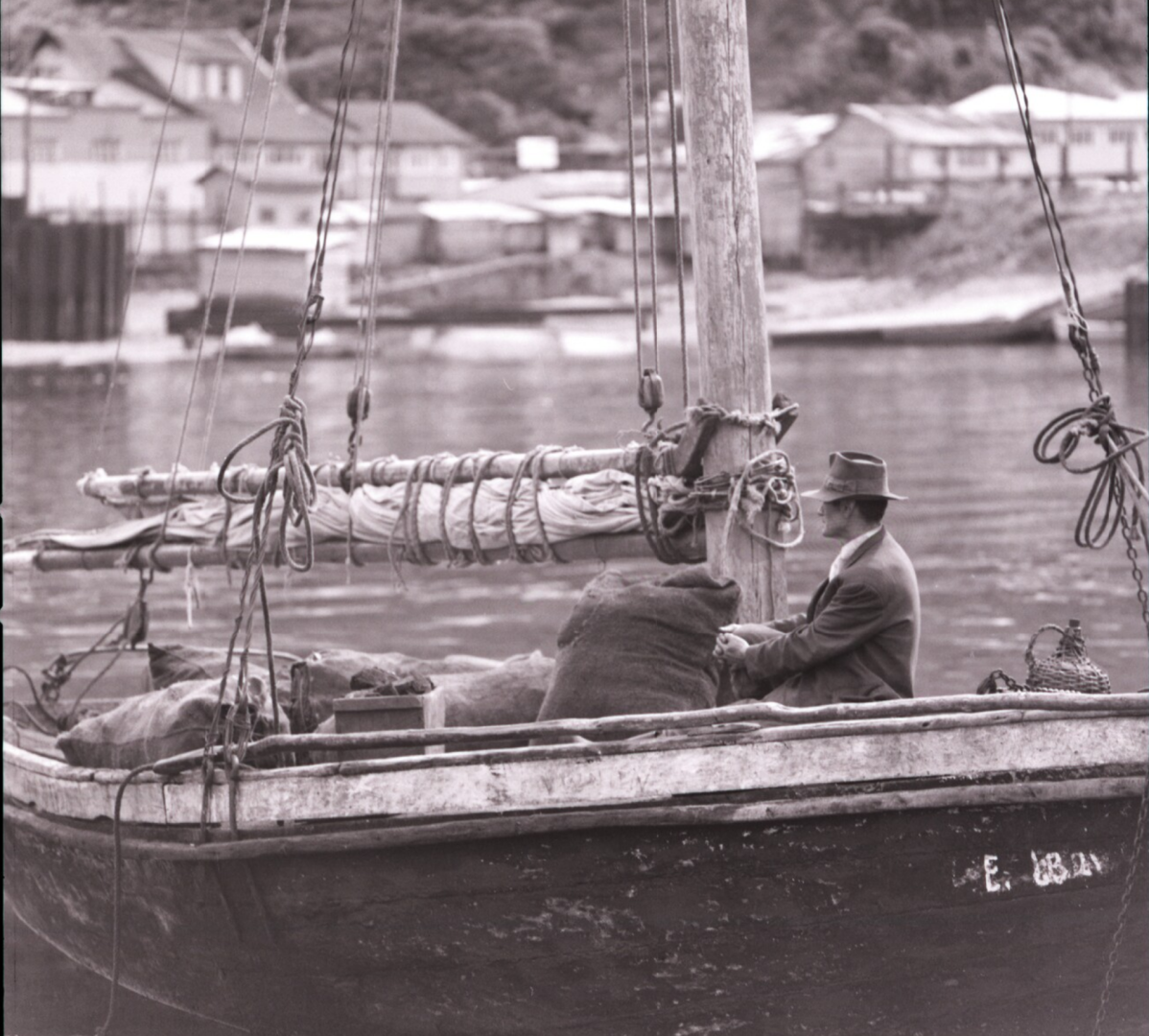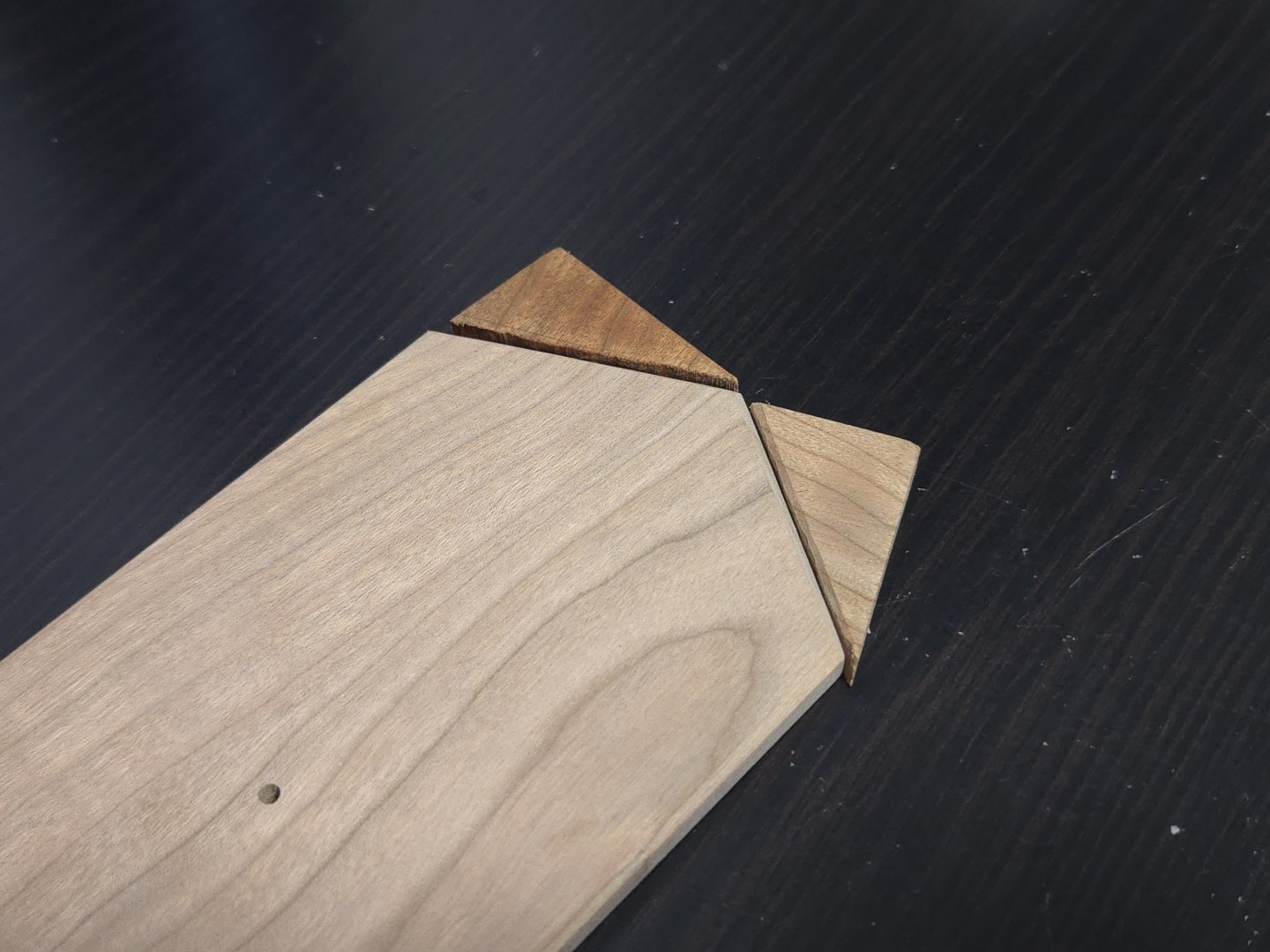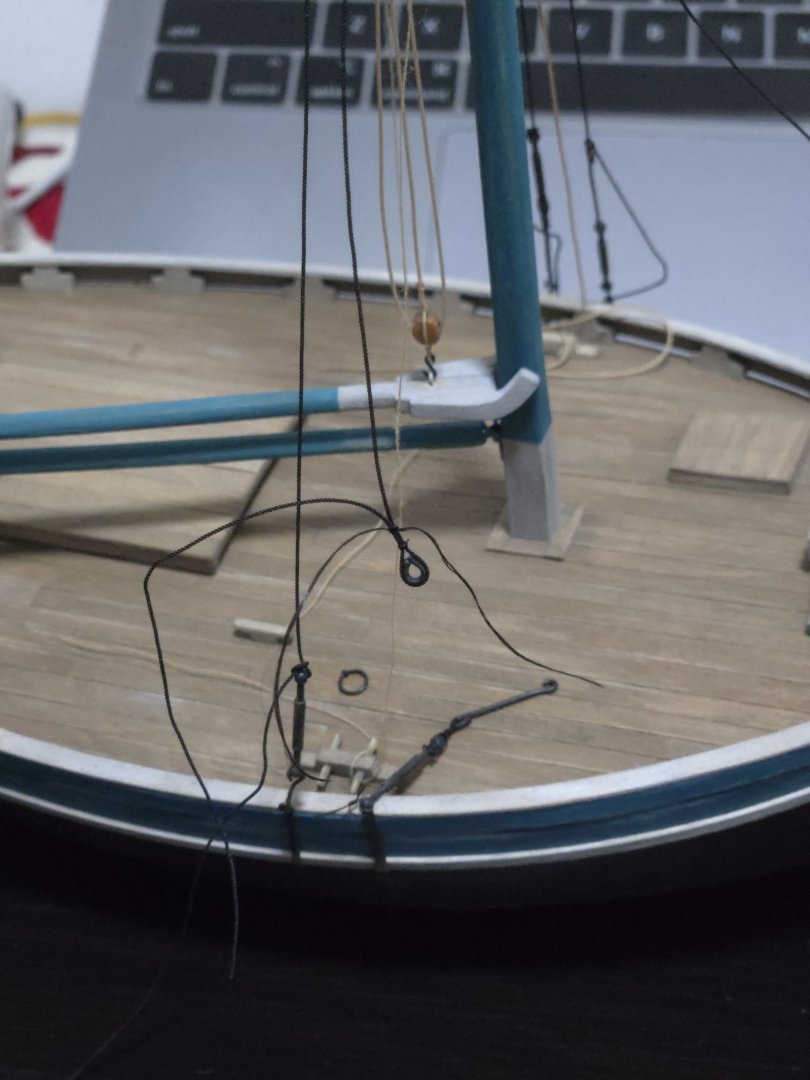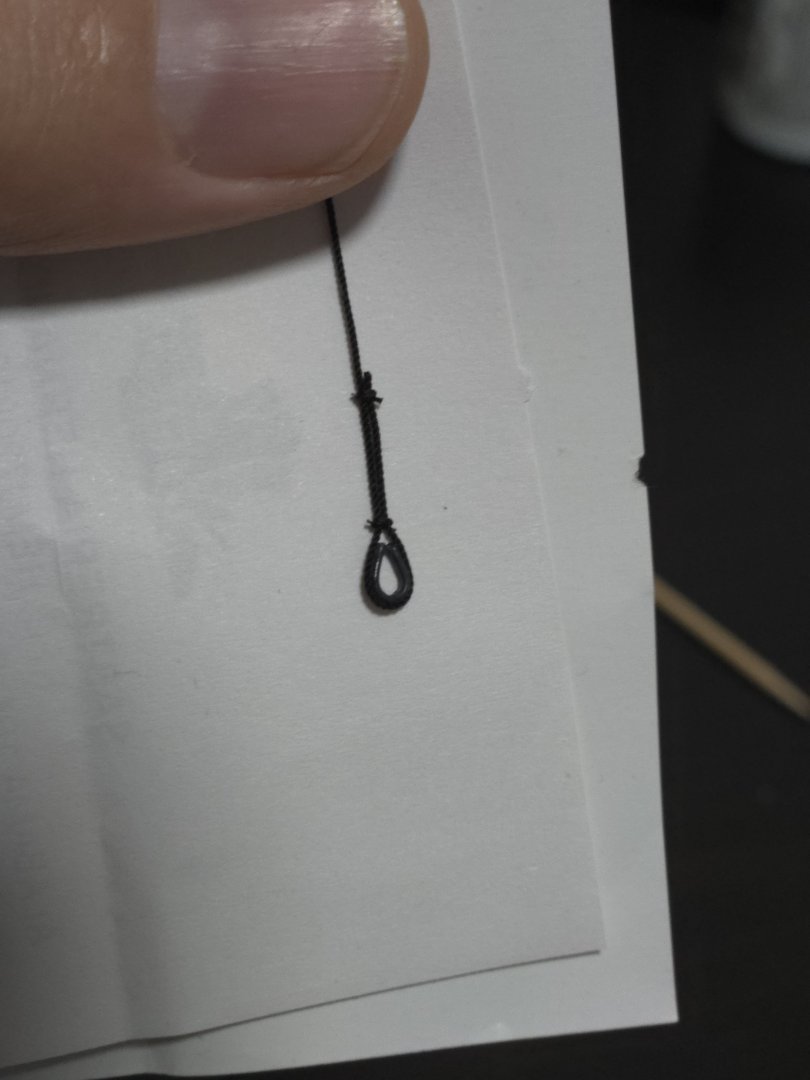-
Posts
1,334 -
Joined
-
Last visited
Content Type
Profiles
Forums
Gallery
Events
Everything posted by JacquesCousteau
-
@wefalck, thanks for the suggestion! I cut some lengths of more-or-less round pieces of mango wood, and applied a bit of minwax cherry stain from a stain pen to try to give it a redder color like in the photos. For whatever reason, the stain didn't really take, forming a slightly darker, slightly gummy outer layer rather than really tinting the wood. I then applied some glue and rolled the stick through sawdust. At first, as seen below, the result looks very fuzzy. After leaving the glue to fully dry, and then shaking off excess sawdust, I then applied somewhat watered-down acrylic paint. The painting process and water led to some clumps of sawdust coming off. It looked odd at first, but once dry, I think the result looked pretty convincing as a roughly cut thin log with the bark still on intended as firewood. I'm considering trying another with the "bark" only on one side meant to look like a split log. I also made an anchor. While earlier chilote vessels used a distinctive type of anchor made by lashing lumber around a heavy stone, metal anchors were common on lanchas, as shown below. Actually, given the overhanging stern, the vessel below is not a lancha but a somewhat larger vessel--perhaps one of the small coasting schooners or sloops that have appeared in the background of other photos I've shared--but it provides an exceptionally clear view of the anchor, and other photos show similar anchors on lanchas proper. Source: https://www.bibliotecanacionaldigital.gob.cl/bnd/629/w3-article-320807.html In the past, I used wire and thread to make the anchor for the Cargo Canoa, while I went with an aftermarket part for the Canoa de Rancho's anchor. This time, I wanted to try making one out of wood, specifically cherry as I needed a fairly hard wood to properly shape the small pieces. I cut the parts from 1/16‐inch thick cherry strip and shaped them with mini-files, glued them together, and drilled the holes for the anchor ring and stock. The wood split when I started drilling the anchor ring hole, but I was able to glue and clamp it back into place and then successfully drill. I then added flukes, made of card soaked in superglue, and a stock of brass rod. Finally, I painted the anchor, dry-brushed on some rust, and added a protective clear coat and an anchor ring. That said, I then double-checked photos and realized that the anchor ring should really be round. Thankfully it was an easy fix. Overall I'm happy with how the anchor turned out. The arms aren't quite even, but I think it's acceptable. I now feel confident making my own anchors from wood rather than having to buy aftermarket ones.
- 312 replies
-
- Chile
- Latin America
-
(and 6 more)
Tagged with:
-
Nice job, the paint work looks great! As does the base. Your photos really highlight that, despite being a relatively small boat, this is quite a big model.
- 90 replies
-
- Friendship Sloop
- bluejacket shipcrafters
-
(and 1 more)
Tagged with:
-
Thanks, @wefalck, for the glasses suggestion. Light ones would certainly be nice, and I may look into them as an upgrade, for now I'm using the big bulky pair we already have. It's been a while since my last post. Unfortunately, there's not much to report on this build. I would quite like to get back to it, but work has been very hectic and I've focused my limited modeling time on the Lancha Chilota, so I haven't been able to cut out any more frames. In any case, I need longer bolts to properly set up the building cradle, which has proven substantially more difficult than I anticipated. Somehow, none of the many hardware shops I've visited have bolts that are long enough, and they don't seem to be available here online, either. At this point, my best bet looks to be to buy a long length of threaded rod, have it cut to size, and use that plus extra nuts and washers in place of the bolt (which will also require drilling bigger holes in the building cradle, which in turn requires buying a bigger bit and bringing the cradle to the carpentry workshop so I can use their drill press). Hopefully the cutting process doesn't damage the threads at the end and make it impossible to add nuts. Alternately, I suppose I could try to make wooden supports to replace the bolts, although I worry about my ability to get them vertical enough. These sorts of tedious issues have been enough of a headache to block things the few times I've had the time and inclination to try to resume work on the Bateau. All of which is to say, this build will pick back up again at some point, hopefully sooner rather than later.
- 139 replies
-
- ancre
- Bateau de Lanveoc
-
(and 2 more)
Tagged with:
-
Congratulations on finishing! Great job on the rigging, I'm sure the original builder would be happy to see his work completed so well.
- 301 replies
-
- Constitution
- Bluejacket Shipcrafters
-
(and 1 more)
Tagged with:
-
Thanks, @Paul Le Wol! I mentioned in my previous post that I was trying to add a bit of lumber to the deck as part of a cargo, but that I wasn't totally convinced by the chopped-up coffee stir sticks I was using. I decided that they were a bit too bright in comparison with the rest of the build, which is rather weathered. Figuring out how to handle this was tricky--after all, recently-cut lumber should of course look much cleaner than a weathered old hull! But it also just looked off. Ultimately, I added a very thin dark wash, just to slightly tone it down a bit. I also made the lumber "stack" a bit uneven and irregular, after my wife (who has a very good eye) suggested that an earlier attempt looked too regularly-structured in comparison with photos of actual lanchas. Finally, I added some rope ties made from scrap rope. As you can see below, it looks a bit less bright than the unfinished original coffee stir sticks. I think the result looks much better on the model, fitting with its visual "language" instead of looking out-of-place while still, I hope, looking like a shipment of lumber. I think it especially looks better in contrast with the unfinished coffee stir stick color (I should briefly note at some point that these are much thicker and more irregular stir sticks than the ones I used for the deck). As can be seen below, I'm definitely erring on the side of caution with deck cargo. I could totally cover the deck and technically be accurate, but I'd prefer to use these details and accoutrements to hint at real practices and purposes without overwhelming the rest of the model. Source: https://losbarcosdejuanvasquez.wordpress.com/2011/06/14/la-lancha-velera-que-transportaba-lena-y-maderas/ While I'm happy with the bundle of milled lumber cargo, the photos above and below show that it was also common to transport rough-cut firewood. Source: https://www.carlosvairo.com/galeria-puerto-montt-lanchas-chilotas This strikes me as a good deal harder to represent. Just grabbing a few sticks seems like it would look out-of-scale. I could use some of the rough-cut mango branch wood that I have on hand, and could stain it a redder color to better match the photo above, but I don't really know how to represent the bark that was clearly still left on the firewood. I considered paint, but I feel like thick blotches of acrylic won't look right. If anyone has any suggestions, I'm all ears!
- 312 replies
-
- Chile
- Latin America
-
(and 6 more)
Tagged with:
-
Nice progress! It certainly sounds like it was a frustrating experience! Getting bulkheads properly positioned can be a real pain in the neck, I remember that it took me quite a long time to do it on my Lancha Chilota build. Your time and care in getting everything squared at this point, though, should pay off later.
-
More slight progress as I cross items off the build's to-do list. First up, I needed to add the parrel rope that holds the gaff to the mast. The clearest photo I could find is below. As can be seen, instead of using parrel beads, the rope itself is doubled up and twisted around itself. Source: https://www.bibliotecanacionaldigital.gob.cl/bnd/629/w3-article-644834.html So, I tried to replicate this with .45mm rope. Unfortunately, after adding it, I realized that I hadn’t quite left enough space in the parrel to let the gaff rest horizontally when lowered--due to the angled jaws and the taper of the mast, when fully lowered it wanted to point up a bit. So, with the gaff still attached to the mast, I carefully filed and cut the inside of the gaff jaws (and repainted it) until it lay better. After doing that, though, I took another look at the photo of a real lancha, and decided that my parrel rope was a lot lumpier than it should be. So, I redid it in .35mm rope. This time, instead of just looping the rope around, I tied a series of simple knots to better hold things. Below, the new parrel, with the original held above it. I'm not sure if it really looks all that much better, but I think I can accept the result. Besides the parrel, I also stropped the sheet block to the boom (the final block on this model). And I added sealer/varnish to the base, sanded with 600-grit sandpaper, added a second layer, sanded again, and rubbed it down with a cloth (I'm not sure if that last step really did much). I'm happy with how the base turned out, it's very smooth to the touch and the very slight darkening effect of the sealer/varnish is exactly what I was looking for. Finally, I've begun experimenting with adding a small load of lumber to the deck. Although there are a few photos of lanchas under sail with decks crowded with lumber, it seems to have been more common to keep things in the hold and only bring them out for display upon arriving in the port to sell the wood. See below, for instance. Source: https://ceph-puerto-montt.blogspot.com/2009/02/album-del-recuerdo-imagenes-de-nuestra_22.html?m=1 For now I've chopped up a few coffee stir sticks to try to represent fresh-cut lumber, although I'm not sure how well they represent what I'm going for.
- 312 replies
-
- Chile
- Latin America
-
(and 6 more)
Tagged with:
-
As I advance on the build, I'm also looking at finishing the base. I was very curious to see what linseed oil would look like on the cherry, as I really like how it turned out on my Half-Hull model. I also tried a bit of my very basic water-based sealer/varnish, testing both on sone scraps. Below, you can see the results compared against the still unfinished board. I was surprised. The linseed oil (at top) significantly darkened the cherry in a way that I don't love. The sealer, in contrast, at right, slightly darkened it and brought out the grain patterns a bit more. As a result, I've decided to go with the sealer/varnish on the base, allowing it to naturally darken a bit with time.
- 312 replies
-
- Chile
- Latin America
-
(and 6 more)
Tagged with:
-
Great choice for a build, I'm looking forward to following along!
- 457 replies
-
- sternwheeler
- Hard Coal Navy
-
(and 1 more)
Tagged with:
-
Thanks, all! Adding those with the mast stepped was definitely a challenge. Fortunately the rest will be done off-model until the final rigging.
- 312 replies
-
- Chile
- Latin America
-
(and 6 more)
Tagged with:
-
I'm inching toward the finishing line here. Next on my list: attaching the thimbles I made earlier to the shrouds and forestay. This would have been much easier with the mast off the model, but I couldn't do that because I needed everything in place to work out where on the lines the thimbles needed to be located. As everything had to be done in the air, I really couldn't take any photos mid-work. My process, after a bit of trial and error, was to figure out the approximate height, use locking tweezers to hold a small loop in the line, and then loosely tie a bit of fly-tying thread around it. Then, put a drop of superglue on the thimble, place it in the loop, and move the thread knot close to the thimble and tighten, adding a few more knots while wrapping it a bit around the line and securing with a drop of superglue. After trimming the excess, add another knot with fly-tying thread further up, and trim the excess. The forestay thimble, the first I did, is shown below. And, below, a shroud thimble before trimming the excess thread. By now, I've added all the thimbles. Next, I'll need to unstep the mast, add the final sheet block to the boom, add a parrel in the gaff jaws, and set up the mast again, this time using the correct rope for all running rigging. The end of the rigging is nearly in sight!
- 312 replies
-
- Chile
- Latin America
-
(and 6 more)
Tagged with:
-
Congratulations! This has been a fascinating build to follow along with. The techniques used, on such a small scale, have really been something else, and the final result is stunning. Really well done. The model will look excellent alongside the pile driver.
- 732 replies
-
- Lula
- sternwheeler
-
(and 1 more)
Tagged with:
-
Nice work on the rigging! Would it make sense to drill a shallower hole and shorten the bottom of the mast by the corresponding amount?
- 121 replies
-
- Lucia A Simpson
- AJ Fisher
-
(and 1 more)
Tagged with:
-
Nice work on the planking, rail, and wale! The stain may not be quite what you were hoping for, but alongside the walnut I think it makes for a nice "rustic" look that can work well for this type of relatively stylized model.
About us
Modelshipworld - Advancing Ship Modeling through Research
SSL Secured
Your security is important for us so this Website is SSL-Secured
NRG Mailing Address
Nautical Research Guild
237 South Lincoln Street
Westmont IL, 60559-1917
Model Ship World ® and the MSW logo are Registered Trademarks, and belong to the Nautical Research Guild (United States Patent and Trademark Office: No. 6,929,264 & No. 6,929,274, registered Dec. 20, 2022)
Helpful Links
About the NRG
If you enjoy building ship models that are historically accurate as well as beautiful, then The Nautical Research Guild (NRG) is just right for you.
The Guild is a non-profit educational organization whose mission is to “Advance Ship Modeling Through Research”. We provide support to our members in their efforts to raise the quality of their model ships.
The Nautical Research Guild has published our world-renowned quarterly magazine, The Nautical Research Journal, since 1955. The pages of the Journal are full of articles by accomplished ship modelers who show you how they create those exquisite details on their models, and by maritime historians who show you the correct details to build. The Journal is available in both print and digital editions. Go to the NRG web site (www.thenrg.org) to download a complimentary digital copy of the Journal. The NRG also publishes plan sets, books and compilations of back issues of the Journal and the former Ships in Scale and Model Ship Builder magazines.



